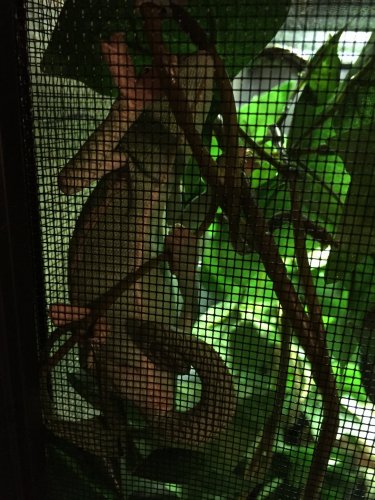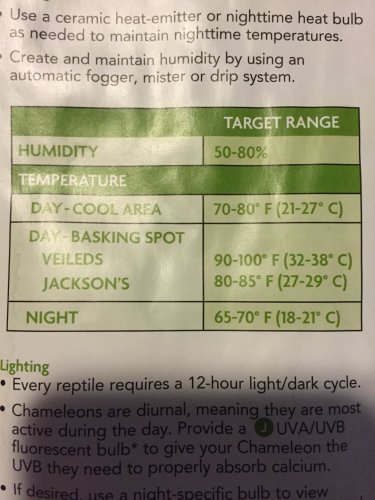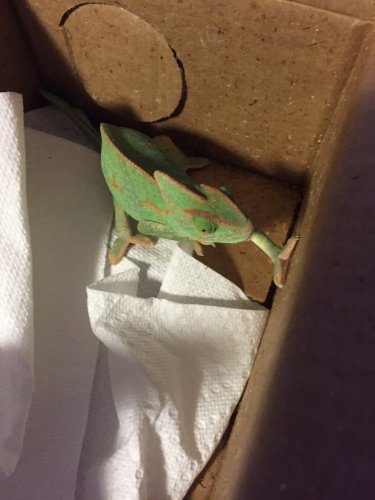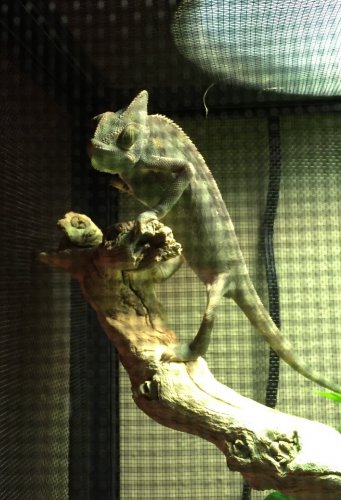Navigation
Install the app
How to install the app on iOS
Follow along with the video below to see how to install our site as a web app on your home screen.
Note: This feature may not be available in some browsers.
More options
You are using an out of date browser. It may not display this or other websites correctly.
You should upgrade or use an alternative browser.
You should upgrade or use an alternative browser.
Jingle's favorite spot... Do you think it's comfortable!'
- Thread starter Rbench
- Start date
Warbornovo
Member
Its ok he's just getting ajusted and when it is curled the heat light is not hot enough. It has to go up to high nineties
tim's owner
Member
Um a veiled is not the suppose to be in the high Nineties high eighties maybe but that veiled is not very old yet.Its ok he's just getting ajusted and when it is curled the heat light is not hot enough. It has to go up to high nineties
I also have seen no information on the tail being curled because of low heat??
Rbench
Member
tim's owner
Member
Go to the resources tab up top then care sheets then veiled. It will have everything you need.
Curled tails have nothing to do with heat...
CHEERS!
Nick
CHEERS!
Nick
tim's owner
Member
Glad to have somebody who knows what he's doing to reasure me.Curled tails have nothing to do with heat...
CHEERS!
Nick
Thanks Nick
Gwendalyn.brock
Established Member
Mine doesn't really curl her tail unless she is sitting on the highest perch of her cage. I don't believe curling tails are an issue, I think its just something that chameleons do.
DaChameleonKing
Avid Member
My Jackson curls his tail sometimes when he is sitting on a branch it's nothing to worry about and a curled tail has nothing to do with heat. When they're basking they might have dark colors to absorb heat though.
My Chamelon
Member
I think their tails curling has to do with whether or not they are comfortable, and when their tails are straight as a stick, they are stressed or aware
tim's owner
Member
Or on the move?I think their tails curling has to do with whether or not they are comfortable, and when their tails are straight as a stick, they are stressed or aware
My Chamelon
Member
My chameleon normally doesn't have a stiff tail when she's on the move, but I'm sure some chameleons so. Sometimes her tail is curled a little at the end, but it shouldn't be limp while they walk!Or on the move?
DaChameleonKing
Avid Member
Or on the move?
Yeah if my Jackson moves (if he has his tail curled up) he would uncurl his tail and move to a different spot and curl his tail back up.
My Chamelon
Member
Nicholasdeaan
Avid Member
If you have a female you want the basking temps to be any where from 82-86 max. When you give female veileds higher temps they end up with larger clutches. And of course, those are harder on their body and result in a shorter life span. Also, when you said " I think it's a she", you should find out 100% certainty if it's a male or female. They both require different husbandries.Thanks.. That had great info!!! And I believe Its a she... Her temps seem to be right in line!!
Nicholasdeaan
Avid Member
Well does the Cham have bumps on the back of its hind feet? They're called tarsal Spurs. Males have them. If not, it's a female.
Similar threads
- Replies
- 12
- Views
- 933





